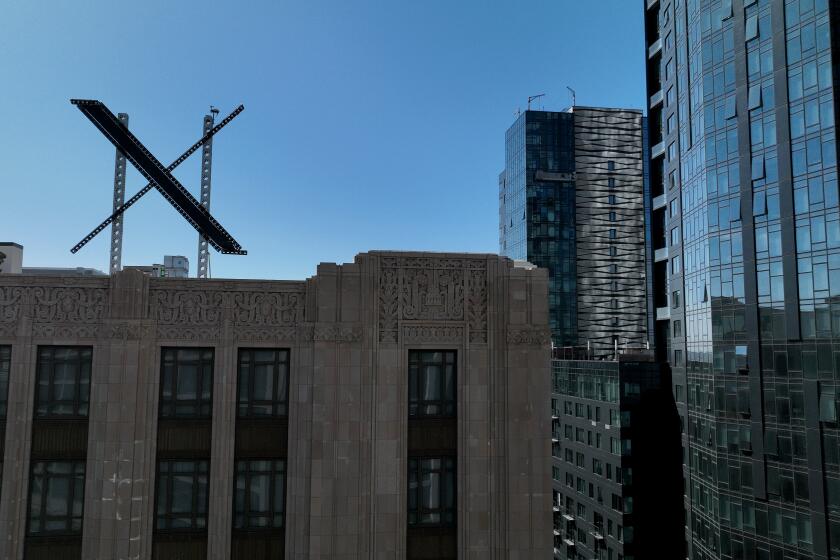Ed Lowe Owes His Fortune to Kitty Litter
NEW YORK — For some, the road to fortune is glamorous. For Ed Lowe, the path has been paved with cat-box filler.
The 65-year-old chairman of Lowe’s doesn’t like to discuss his income, but his privately owned company has sales of $100 million.
Lowe has homes in four cities, jet-setting among South Bend, Ind., the company’s headquarters, offices in Chicago and Sarasota, Fla., and, of course, Cassopolis, Mich., where Lowe’s began and where the company keeps its 35-cat research “cattery.”
Since trail-blazing the industry with the original Kitty Litter, Lowe has witnessed the rise of a slew of competitors pitching their filler in food stores, pet shops and mass merchandisers.
Today, Americans spend between $270 million and $300 million a year filling their cat boxes. Of that, 12.6% is spent on Lowe’s Kitty Litter and another 22.5% on Tidy Cat, another of his brands.
Stiff Competition
Among the companies slugging it out for the cat trade are a number of regional firms, private labels and Clorox, which manufactures Fresh Step and Litter Green.
“And,” says the king of the cat litter trade, “the cat box filler business is serious business.”
The inventor of Kitty Litter got his start in Cassopolis, Mich., where Henry Edward Lowe joined his father’s sawdust business following a tour with the Navy in World War II. His father also sold absorbent clay, used on factory floors.
In 1947, a neighbor asked him for a cat-box filler. She had been piling ashes in her cat box and was tired of a house full of sooty paw prints.
Inadvertent Discovery
She asked for sand; he suggested the absorbent clay. “More to get rid of her than anything else,” he said.
But the neighbor came back for more and Lowe figured he was on to something. He approached a local pet store with 10 five-pound bags of clay labeled with grease pencil: “Kitty Litter.”
The owner of the pet store doubted that anyone would pay 65 cents for five pounds of clay when sand was so much cheaper. Lowe told him to give it away, and soon, pet store patrons asked for the clay by name.
Next came a traveling salesman period, when Lowe peddled his Kitty Litter to pet stores and at cat shows. Eventually he opened wholesale operations. By 1954, Kitty Litter cat-box filler was available in supermarkets.
The rest is history.
Today, the company’s sales come from three different brands of filler: The flagship Kitty Litter, Tidy Cat and a lower-priced variety, Sophisticat.
“There’s some very basic elements for a good business,” Lowe said. “And to have a successful business, you have to have a good advertising program.”
In today’s market, that translates to big money. Lowe’s promotions cost for this year will approach $15 million to $20 million.
Part of staying on top of the heap involves revving up the old products to keep consumers interested.
New TV ads follow up on an old idea for Kitty Litter, using a black cat with the distinct markings of a skunk. The kicker is “a cat without Kitty Litter seems like a whole different animal.” The before-and-after, of course, pictures the cat with and without its skunklike stripes.
In addition to new advertising, the Kitty Litter packaging will also undergo an unsettling transformation.
For years, the bags featured a scruffy-looking tomcat, affectionately known to insiders as Charlie.
New design has given Charlie the boot, replacing him with a more serene marmalade model.
The bag also sports a picture of kitty-loving Lowe, holding one of his own cats.
And one thing he is sure about is keeping the cat-box filler enterprise private, and, with its distribution channels perhaps expand into other ventures. He wouldn’t elaborate.
“Lowe’s will not be sold,” he said. “Lowe’s will go on forever. Lowe’s will become a billion-dollar company.
“We know that we can’t become a billion-dollar company as a cat-box filler.”
More to Read
Inside the business of entertainment
The Wide Shot brings you news, analysis and insights on everything from streaming wars to production — and what it all means for the future.
You may occasionally receive promotional content from the Los Angeles Times.










